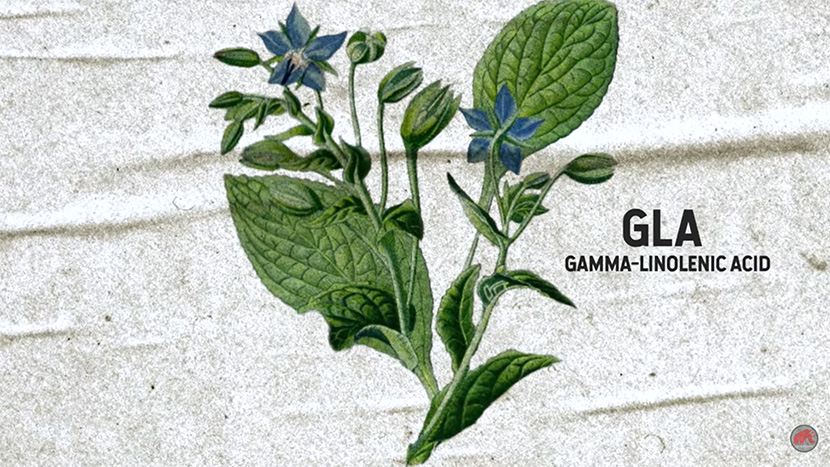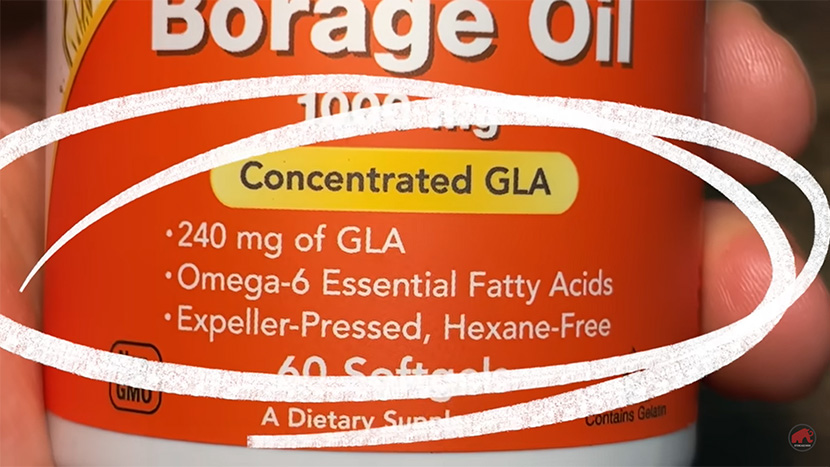How GLA’s Reduce Inflammation – The Science Behind Reducing Chronic Inflammation with Borage
Inflammation is a blessing and a curse in our bodies. Often it is a necessary immune response, but it can also cause pain, discomfort, acne, and even more complicated issues. With that in mind, it can be necessary to reduce inflammation through diet and/or supplements and medications. One compound found naturally to help combat inflammation is GLA. GLA, Gamma-linolenic acid, is an anti-inflammatory omega 6 acid that is found naturally in a few plants, such as primrose and the borage plant, and is extracted and sold commercially as a supplement, but how exactly does this compound reduce inflammation in the body? Let’s take a quick dive into the science behind it!
Why does inflammation happen in the body?
Inflammation is normally pretty uncomfortable, and can become problematic when it is chronic, but a bit of inflammation is actually a necessary part of survival as well. How is that? Well, acute inflammation is a response of the body to fight off infection and other risks by making the body an uninhabitable environment for bacteria and/or viruses. The heat and swelling from inflammation helps in the direct killing of foreign bodies, in the recruitment of more immune cells to help clear out the attackers, and in wound healing. Essentially, a bit of inflammation is crucial after injuries or infection in order to prevent illness.
Fever for example is a “system wide” inflammation that occurs to fight off illness, here is a pretty cool video that breaks it down:
The unfortunate part for us is that this same response that is meant to harm bacteria and viruses can also cause us pain. This is especially true when certain conditions cause too much inflammation over long periods of time. Sometimes inflammation also goes unchecked by the body and continues to occur long after a threat, or without any real threat at all. In many conditions, researchers and doctors know that inflammation is related to disease, and sometimes it’s hard to decipher whether inflammation is the cause of certain problems, or a by-product, or even a bit of both.
Why Reduce Inflammation?
So even though a little bit of inflammation can be normal, too much inflammation is not only undesirable, but harmful. Chronic inflammation causes your immune system to overwork itself and even to attack healthy cells, all of which can cause pain and further health complications – so it does need to be controlled.
Auto-immune diseases, diabetes, rheumatoid arthritis, as just a few examples, and many other illnesses can cause chronic inflammation that is painful and should be reduced. Acne and some other skin problems are also related to high inflammation and treatment that can create healthier, more comfortable skin.
The best ways to prevent and treat chronic inflammation is through a healthy diet and exercise, including foods high in antioxidants and healthy fats, but you can also take supplements if your doctor recommends it. GLA is one of these supplements that can help with inflammation.
What is a GLA?
GLA is one of the key omega-6 acids that you have probably heard about before as an important part of a healthy diet. Fatty acids are important for regulating inflammation, as well as crucial to nutrition. GLA is found in many plants naturally, with the borage plant having the highest percentage.
GLA is actually produced naturally in the human body in small amounts, during the metabolism of linoleic acid, but this is a slow reaction and is made even slower in people that might have a deficiency in vitamins or minerals, or (you may have guessed it) in those that have conditions that increase inflammation. So, it is important in reducing inflammation, but it isn’t produced as well during high inflammation, which is kind of a bad positive feedback loop for us.
Now that GLA is now known for its importance in inflammation regulation and even cancer prevention – even helping with the nervous system and blood flow – GLA supplements are getting more popular. But how does it work?
How do GLAs reduce inflammation?
GLA in the body goes on to form a compound called DGLA, which acts as a substrate for COX and LOX enzymes. These enzymes are crucial in the regulation of inflammation in the body, “turning on” inflammation when necessary and “shutting it off” when the body no longer requires it. So, in a simplified sense, DGLA can help these COX and LOX enzymes to “turn off” the unnecessary chronic inflammation that causes pain. Through this mechanism, GLA has been shown in clinical trials to reduce pain, stiffness and swelling when taken for a long period of time.
Unfortunately, for conditions causing serious inflammation, such as rheumatoid arthritis, GLA is often not enough on its own to relieve pain. It is more like a helper. However, trials have shown that it can reduce the need for traditional anti-inflammatory drugs, such as Non-steroidal anti-inflammatory drugs (NSAIDs), which are things like aspirin.
DGLA and can even help combat against some of the gastric stressors that can be side effects of continual use of NSAIDs. This is because NSAIDs tend to reduce PGE1 in the body – which helps produce gastric mucus – but DGLA stimulates its production, balancing the process out. GLA therefore is an excellent supplement to traditional medications for inflammation, both to reduce the need for them and to balance out their potential negative impacts.
Final Notes
Acute inflammation is a necessary immune response of our bodies, but chronic inflammation can cause a lot of issues if untreated. Aside from a healthy diet and exercise, people can look to supplements such as GLA extracted from the Borage Plant to help reduce chronic inflammation and even to help reduce negative side effects of traditional anti-inflammatory drugs.
Watch more about the borage plant here:


































































































